There are so many famous landmarks in France that you’ll likely want to plan a second or third holiday to get around to them all. The many landmarks and monuments are spectacular representations of the many historic periods France has gone through.
Throughout the centuries, the French have immensely contributed to the world of art, philosophy, architecture, and, of course, cuisine. France has long been a source of influence in all aspects.
You may have heard of famous influencers like Napoleon Bonaparte, Jean-Paul Sartre, Claude Monet, and Coco Chanel. Or you may have learned about French cuisine through that movie where the rat cooks Ratatouille.
The French take a lot of pride in their rich history and culture — and the well-maintained landmarks are a testament to that national pride. The list below contains some of the top famous monuments and landmarks that you won’t want to miss on your holiday in France.
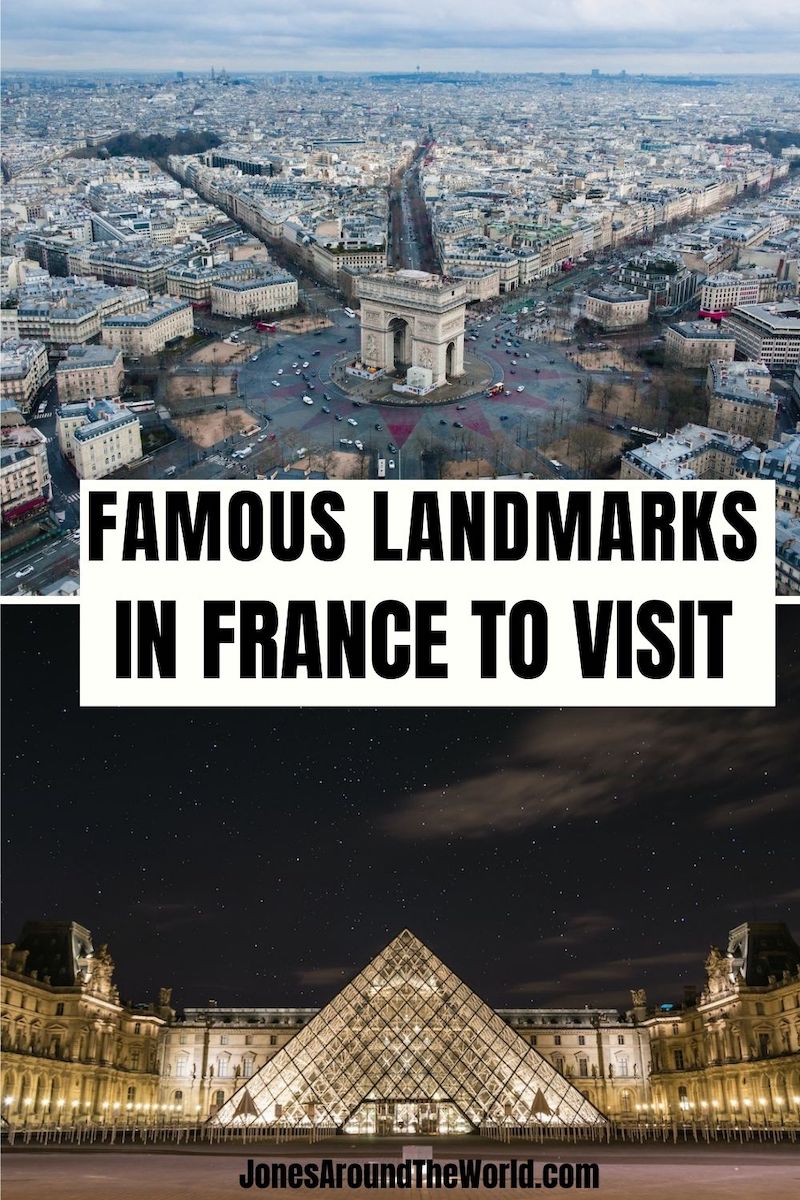
Keep reading to discover iconic and Famous Landmarks in France!
1) Eiffel Tower
Location: Paris
A popular French quote from Thomas Jefferson is, “A walk about Paris will provide lessons in history, beauty, and in the point of life.” While Paris may be a tad over-romanticized in the media, this city truly is a central point of French history and beauty. In Paris alone, there are 100’s of monuments worth visiting.
But the one landmark that has come to represent Paris is the Eiffel Tower which comes to life at night. While the Eiffel Tower is worth a climb, its beauty is best observed (and captured) at a distance – or from your hotel window. It’s an Instagram-worthy photo opportunity with great historical significance.
The Eiffel Tower, designed by Gustave Eiffel, was built from 1887-1889 by a small workforce. The construction of this iconic masterpiece only took two years and was built to celebrate 100 years since the French Revolution.
The tower accurately embodied the essence of the French revolution by being an innovative and technologically advanced structure for its time. Up until 1929, this structure was the tallest in the world.
2) Pont du Gard
Location: Occitanie region
Continuing on the topic of engineering masterpieces, the Pont du Gard (“Bridge of the Gard”) is a Roman Aqueduct built around 19 BCE over the Gard River. Consisting of three layers and stretching across 275 meters, this bridge is both technically and artistically spectacular.
This UNESCO World Heritage site is well worth the visit while you’re in the south of France. While parts of the bridge have undergone restoration a few times, architects have kept the bridge design as true to the original as possible.
The Pont du Gard can be sighted on a kayak trip along the river, or you can visit the museum and have something to eat at one of the restaurants on either side of the bridge. There are also temporary art and science exhibitions on display, and an outdoor exhibition about human occupation of the past 2000 years.
3) Arc de Triomphe
Location: Paris
Constructed in 1806 to celebrate the French military’s triumph in the Battle of Austerlitz, this monument has come to symbolize French national identity. France’s tomb of the Unknown Soldier was added to the base of this monument in 1921. And a flame of remembrance is relit every day at 18:30.
Due to its significance, the annual military parade on 14 July, known as French National Day (or Bastille Day), starts at the arch. The famous Tour de France cycling race also ends near this monument every year.
The architect, Jean-François Chalgrin, took inspiration from Roman architecture while designing this intricate 50 m high and 22 m wide arch. The monument beautifully adorns the Champs-Élysées and offers an unmatched panoramic view of the city from its terrace.
4) Mont-Saint-Michel Abbey
Location: Normandy
This small island, known initially as Mont Tombe, eventually became known as Mont St. Michel when St. Aubert, bishop of Avranches, had a vision of the archangel. He built an oratory on the island in the 8th century, which became a pilgrimage center.
Several additions have been made to this island in the years and centuries to follow, including the monastery La Merveille (“The Wonder”). The French buildings on the island beautifully represent the Romanesque and Norman Gothic architectural periods during which many additions were constructed.
This UNESCO World Heritage site has seen many inhabitants and served many purposes throughout its 1300 years of existence. It is continuously undergoing restoration and maintenance to keep this historical landmark standing and open to visitors.
This medieval island makes for a beautiful photo backdrop and has a captivating history that will leave you impressed and intrigued.
5) Versailles Palace
Location: City of Versailles
The opulent decor, intricate architecture, and beautiful gardens make this UNESCO World Heritage site worth the visit. It’s no surprise that this property of over 800 hectares receives millions of visitors each year.
The site was initially used as a retreat and hunting lodge until 1624, when King Louis XIII appointed Jacques Lemercier to construct a château on the property. When Louis XIV came into power, he transformed the property into an extravagant complex with glorious French and English gardens.
When the French Revolution came around, resentment grew towards the lavish lifestyle of those of high society. Marie Antoinette, the wife to Louis XVI, was especially disliked for her abundant living. She had her own luxurious estate on the property, called “The Petit Trianon,” complete with a theater, farm area, and private grotto.
A guided tour is a perfect way to take in the beauty and history of this breathtaking palace, which now serves as a museum. The Palace of Versailles contains over 60,000 artworks that provide insights into the past and adorn the palace walls.
6) The Louvre
Location: Paris
Originally home to the royal court, the palace was transformed into a museum after the royal family moved to Versailles. This world-renowned art museum in Paris is home to over 300,000 artworks collected over the centuries.
The thousands of artworks on display are categorized and displayed in different themed departments like the Egyptian Antiquities and Islamic art departments. It can easily take an entire day to explore this enormous museum thoroughly, and for those who are especially invested in art, it may take even longer.
The once-controversial glass pyramid that serves as the entrance to The Louvre is now one of the most recognized French Landmarks. The Pyramid entrance and the underground shopping and dining area helped free up space in the museum. This allowed for more art to be housed in the museum and aided in accommodating the increasing number of visitors.
You’ll find famous artworks such as the Mona Lisa, The Seated Scribe, and the Winged Victory of Samothrace in this spectacular museum.
7) Arena of Nîmes
Location: Occitanie region
The Nîmes arena is believed to have been constructed shortly after the famous Colosseum in Rome, dating back to the 1st century. It is the world’s most well preserved Roman Amphitheater and is still used today for annual bullfights during Féria.
This incredible elliptical-shaped arena can accommodate over 20,000 people. It was built on the city’s outskirts, almost against the Roman walls. The outline of these walls can be seen lit up in red if you visit at night.
The Nîmes citizens, then named Nemausus, visited the amphitheater to watch animal huntings, gladiator fights, and executions. The amphitheater has served as a military fortress to the Visigoths and as the seat of the Viscount of Nîmes.
8) Sainte-Chapelle
Location: Paris
The Sainte-Chapelle is a magnificent monument of the French Gothic architectural style and an incredibly advanced construction built in only seven years (1241-1248). King Louis IX built it to house the Holy Relics of the Passion and was later declared a saint by the Catholic church.
What makes this chapel especially striking are the 15 stained glass windows, each 15 meters high, that depict 1,113 scenes from the Old and New testaments. The scenes also depict how the Holy relics were brought to Paris. The rose window, added in the 15th century, depicts scenes from St John’s Book of Revelation in 79 scenes.
The meters of stained glass create a mesmerizing show of colors within the chapel that’s undoubtedly worth seeing at least once in your lifetime.
9) Loire Valley Chateaux
Location: Touraine
There are few places in the world as fairytale-like as the Loire Valley. This UNESCO World Heritage Site has had many purposes throughout the centuries, but the early French renaissance period left a unique mark on this region.
Once home to a few notable fortresses, such as Chinon, the French kings found the Loire Valley especially welcoming during the French Renaissance. This period saw the construction of modest to extravagant chateaux inspired by Italian culture.
Perfect, intricately planned gardens often accompanied these magnificent structures. The many well-kempt gardens and fantastical Loire Valley chateaux make the landscape one of the most beautiful in France.
Taking a guided cycling tour is a great way to get to know the beautiful structures and their accompanying history. The valley is also known for its outstanding white wine, so a Loire Valley wine tasting is well worth adding to the bucket list.
10) Provence Lavender Fields
Location: Provence
The bright lavender fields that bloom from June to August are an iconic and unmissable sight. These fragrant fields stretch as far as the eye can see and create the most picturesque landscape.
The best time to see the landscape painted purple is in early July before the lavender is harvested.
The small Luberon lavender fields are usually the first to bloom, followed by the most popular fields in Valensole Plateau. The village of Sault is the last to experience the burst of lavender and is usually less frequented by tourists.
A stroll through these fields is an absolute treat to the senses and is the perfect opportunity to capture some memorable photos.
11) Cité de Carcassonne
Location: Occitanie region
Carcassonne is the oldest standing example of a fortified medieval city. Occupied as early as the 5th century, this city has seen many different populations throughout the centuries.
Everyone from the Iberians to the Gallo-Romans, the Visigoths, and Muslim invaders played a role in the architecture and layout of the city as it stands today.
By the 17th century, the city was left to decay. But a passionate Carcassonne councilor, Jean-Pierre Cros, fought to spare this city from destruction. With support from French writer Prosper Mérimée, Cros managed to have the city classified as a historical monument.
Mérimée entrusted the city’s restoration to Eugène Viollet-le-Duc, who had also been in charge of restoring monuments such as Mont Saint Michel and the Notre-Dame cathedral in Paris.
A visit to this medieval city feels like a walk back in time. You’re free to explore the city at your own leisure or take a guided tour to delve deep into the rich history. The city also hosts a medieval market, the Carcassonne festival, and a yearly 14 July firework display and bonfire.
Other worthwhile sites in the Occitanie region include the Viaduc de Millau, the Gouffre de Padirac cave, and the Maison Carrée.
Ready to See Some of the Top France Landmarks?
In France, famous landmarks are to be found almost everywhere you go. The country has an extensive history that has shaped French culture and decorated its landscape. A visit to this country will therefore always offer something new and memorable.
Notably, many of the most famous landmarks in France are situated in Paris. If you’re looking for accommodation in Paris, have a look at this list of the best Airbnb’s in Paris. You can also check out this 4-day Paris itinerary to help you plan other activities between visiting some famous buildings in France.
Looking for more Famous Landmarks Around The World?
My travel blog has tons of informative and fun guides to the best of Europe! Take a read through some of my favorite below, and be sure to reach out with any questions!
- Famous Landmarks in London
- Famous Landmarks in Ireland
- Famous Landmarks UK
- Famous Landmarks in Spain
- Famous Landmarks in Italy
- Famous Landmarks in Greece
- Famous Landmarks in Australia
- Famous Landmarks in Asia
- Famous Landmarks in Japan
PLANNING A TRIP TO EUROPE?
I’ve got dozens of other guides for you to browse any future trips! These are all amazing guides, and I’d love for you to take a look!
- Where To Go Glamping in Ireland
- Where to Go Glamping in Scotland
- The 20 Best Techno Festivals in Europe to Experience This Summer
- Where to Stay in Tuscany | Top 20 Resorts, Villas & Hotels
- 80 Fun, Fascinating, and Interesting Facts About Italy
- The Best 10-Day Italy Itinerary For First-Timers
- The 13 Best Places to Visit in Europe in February
- 2 Days in Madrid | How to Explore Madrid in 48 Hours
- 2 Days in Copenhagen | The Best 48 Hours/ Weekend Guide to Copenhagen
- 2 Days in Budapest | The Ultimate 48 Hour Weekend Guide to Budapest
- 2 Days In Berlin itinerary | How to Explore Berlin in 48 Hours
- 2 Days in Prague | What to See & Do in Prague in 48 Hours

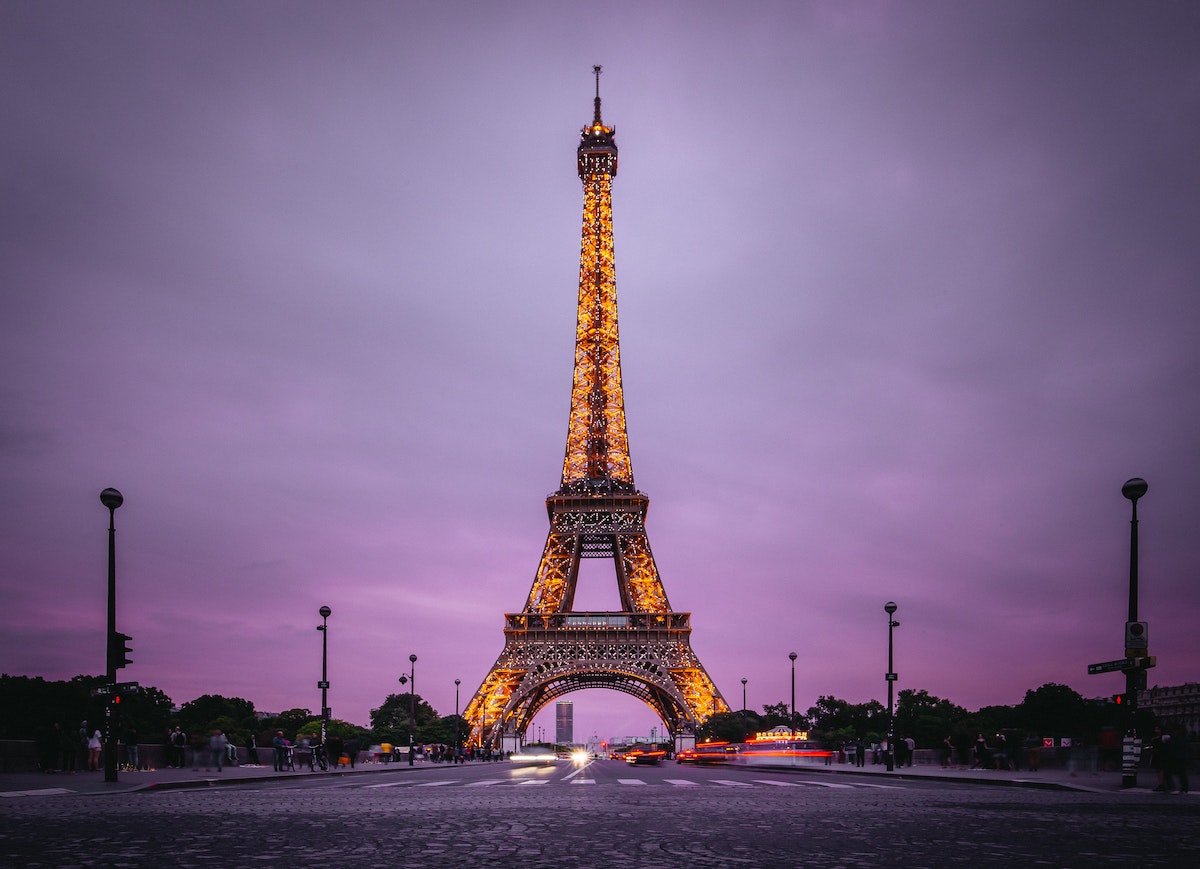
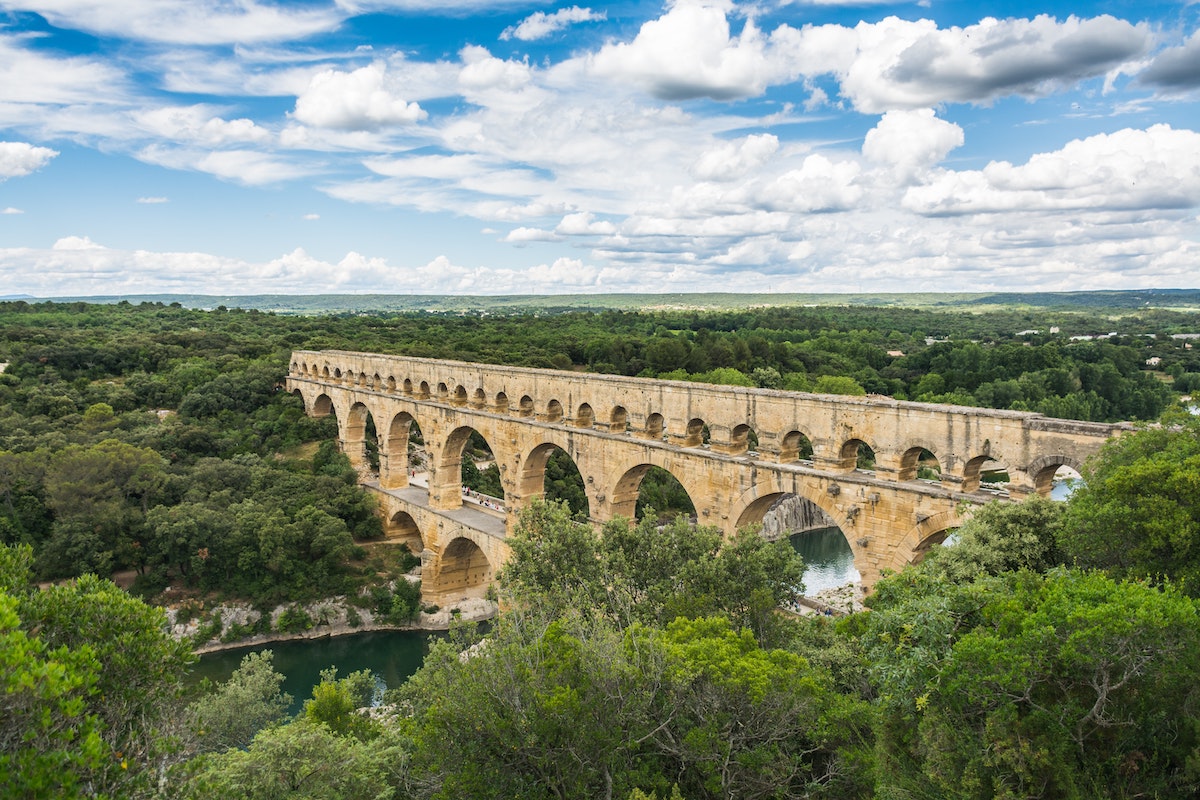
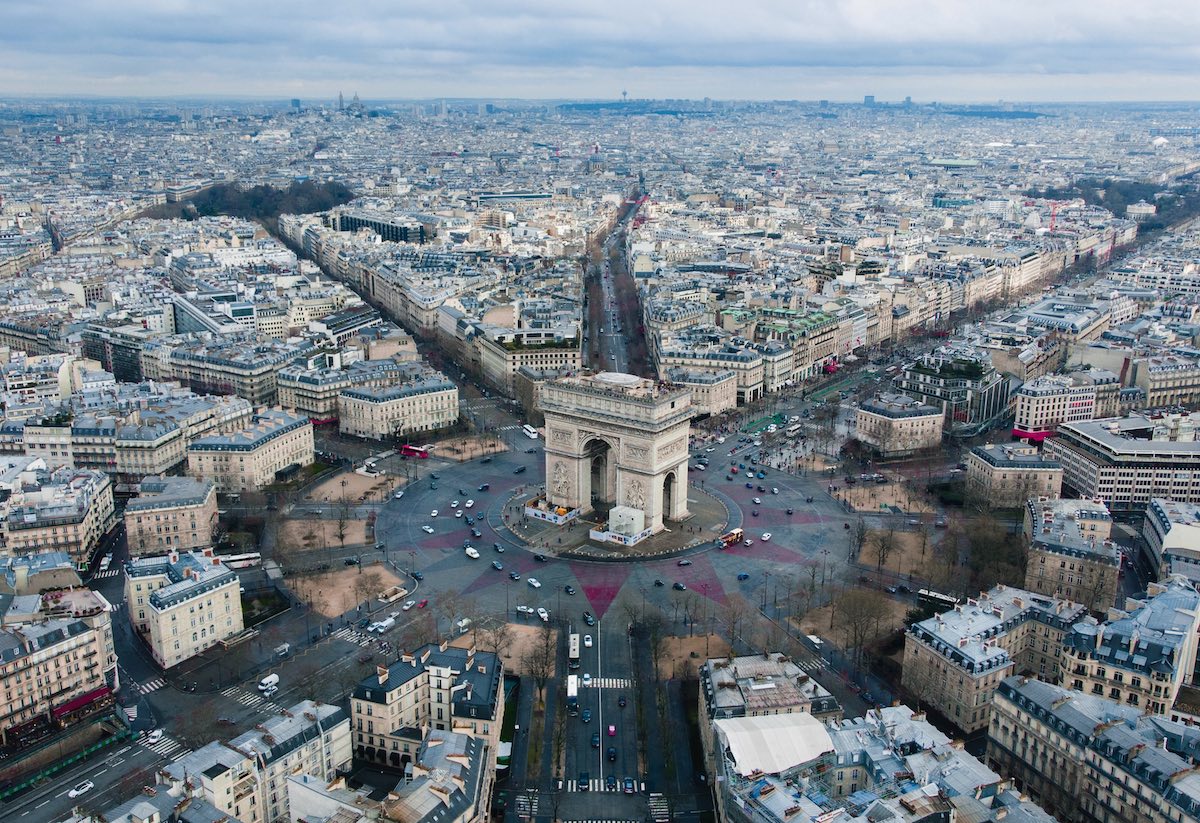
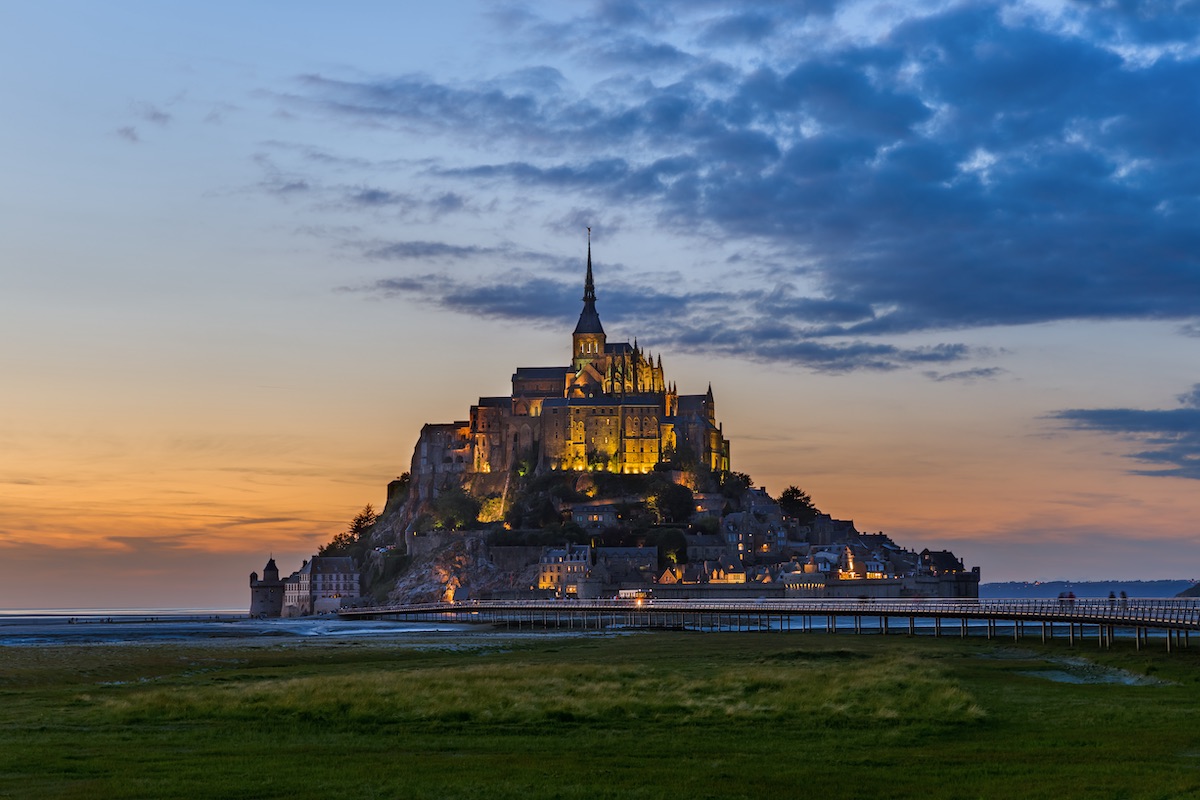
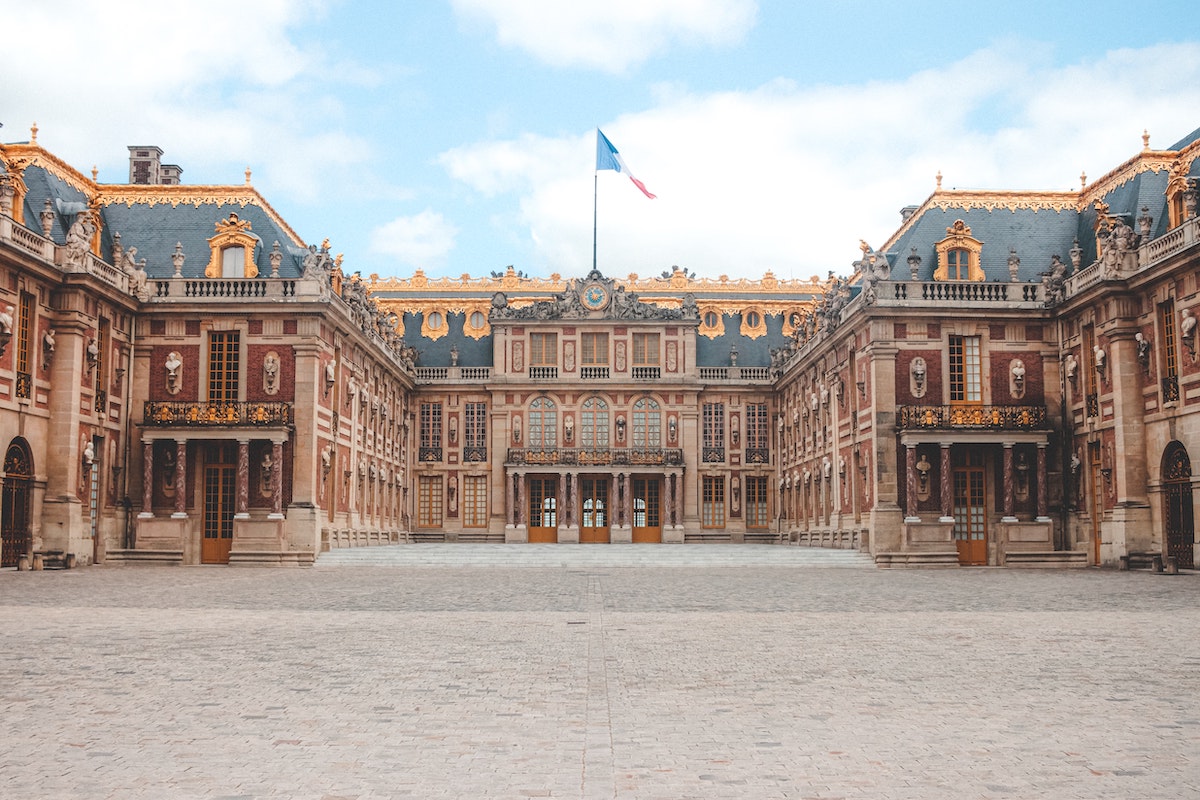
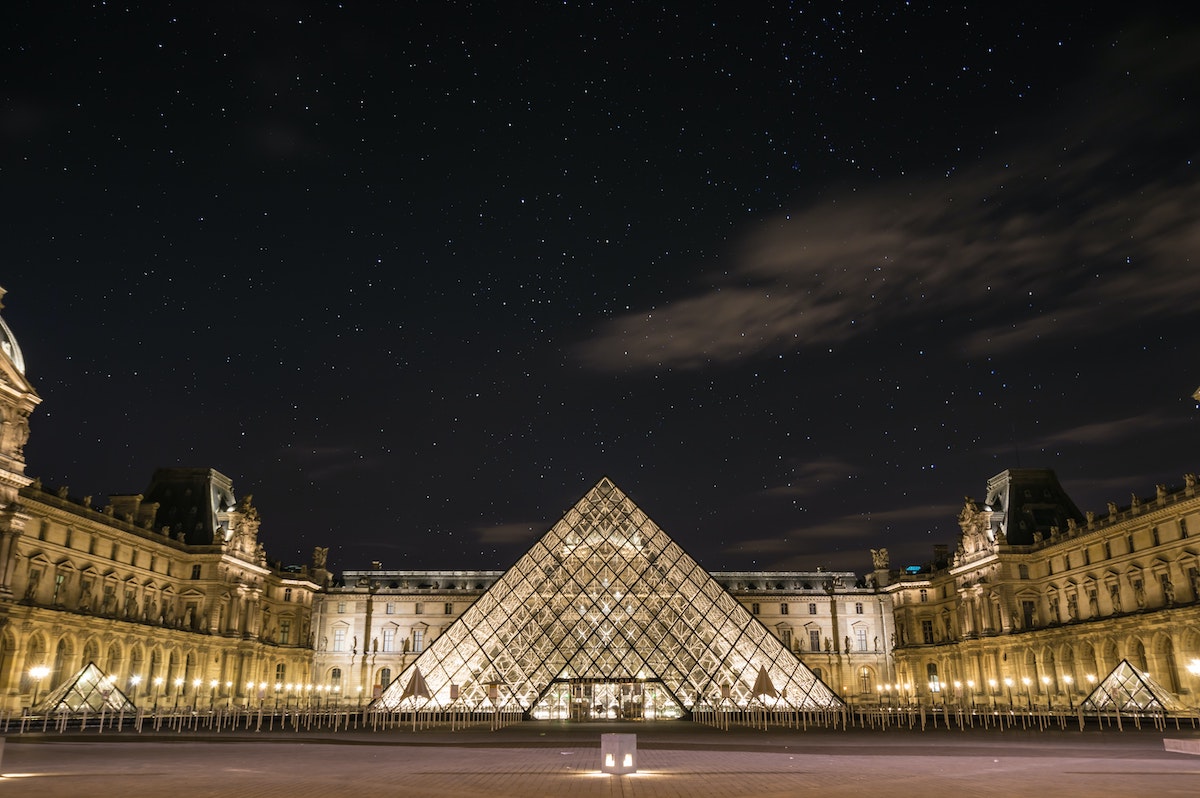

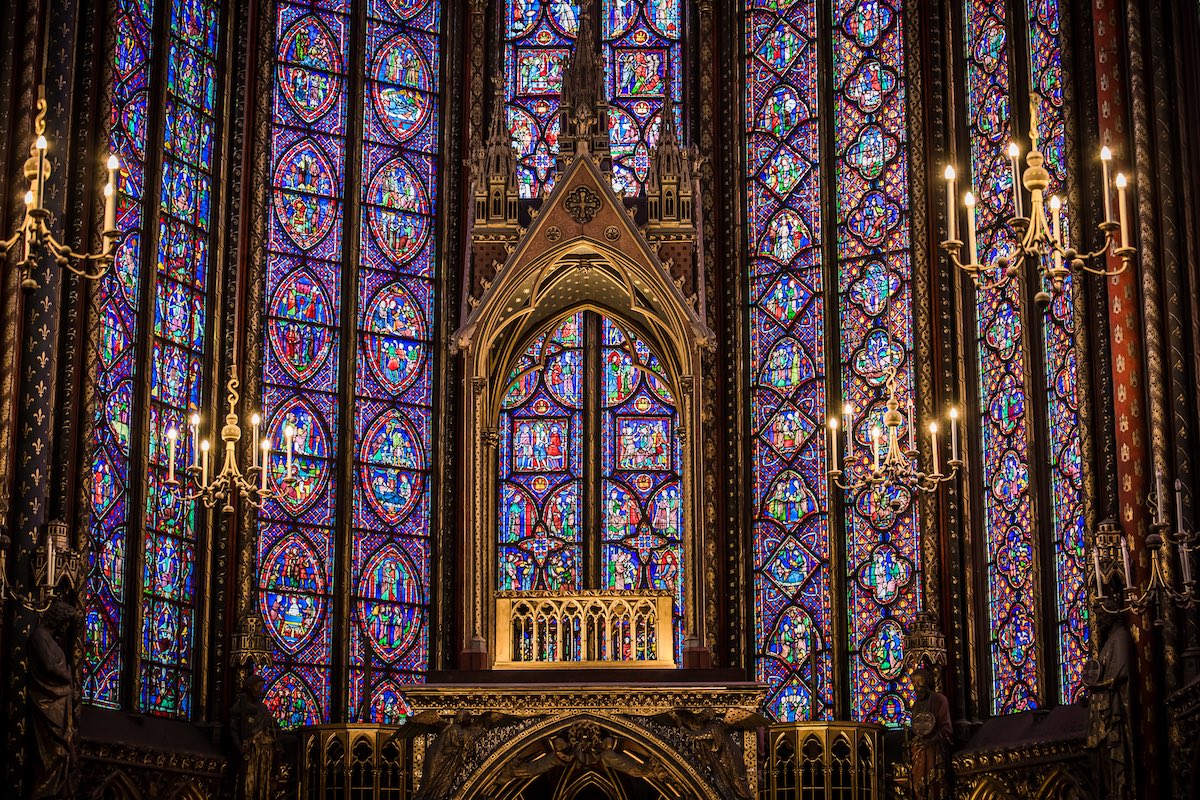



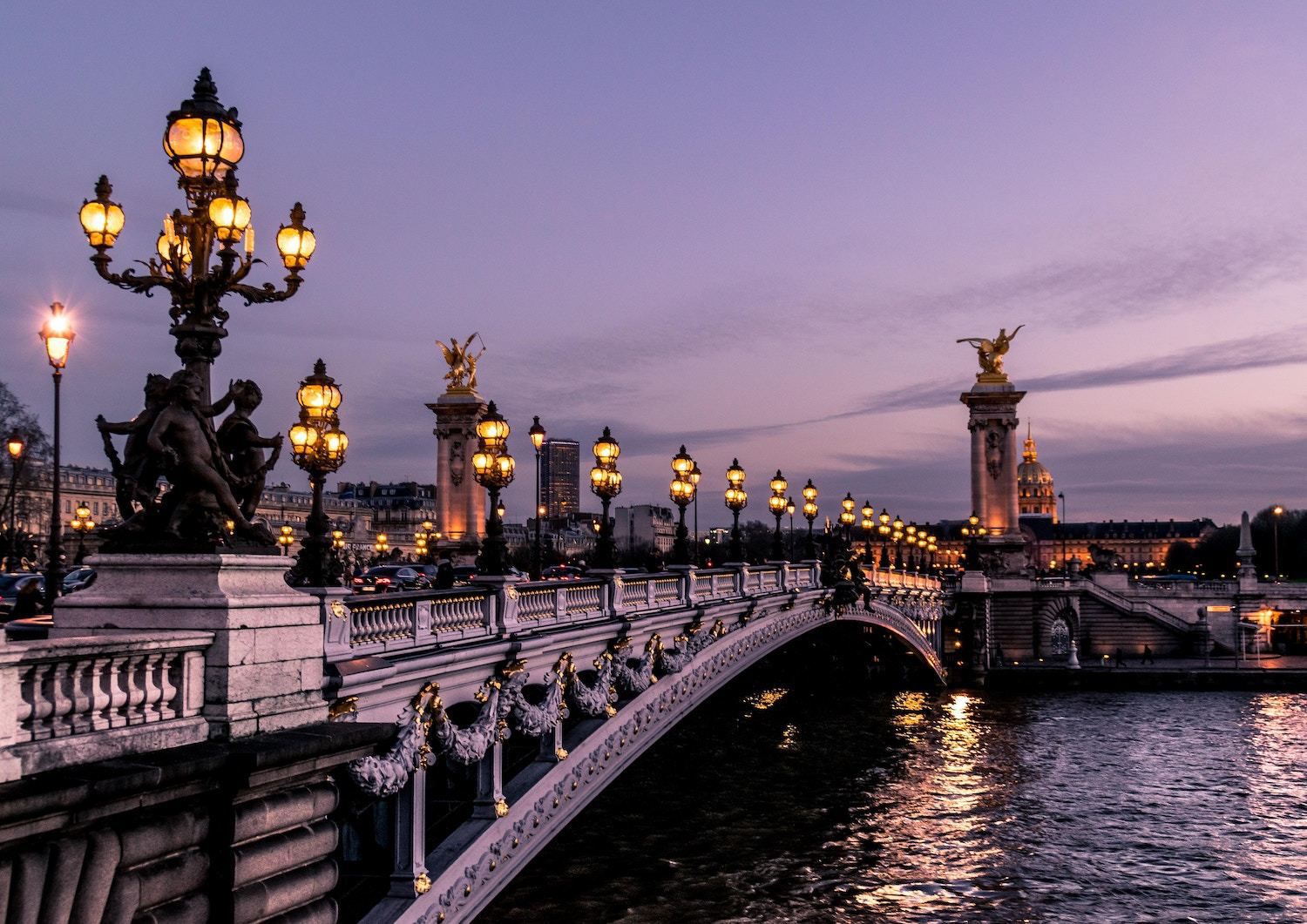
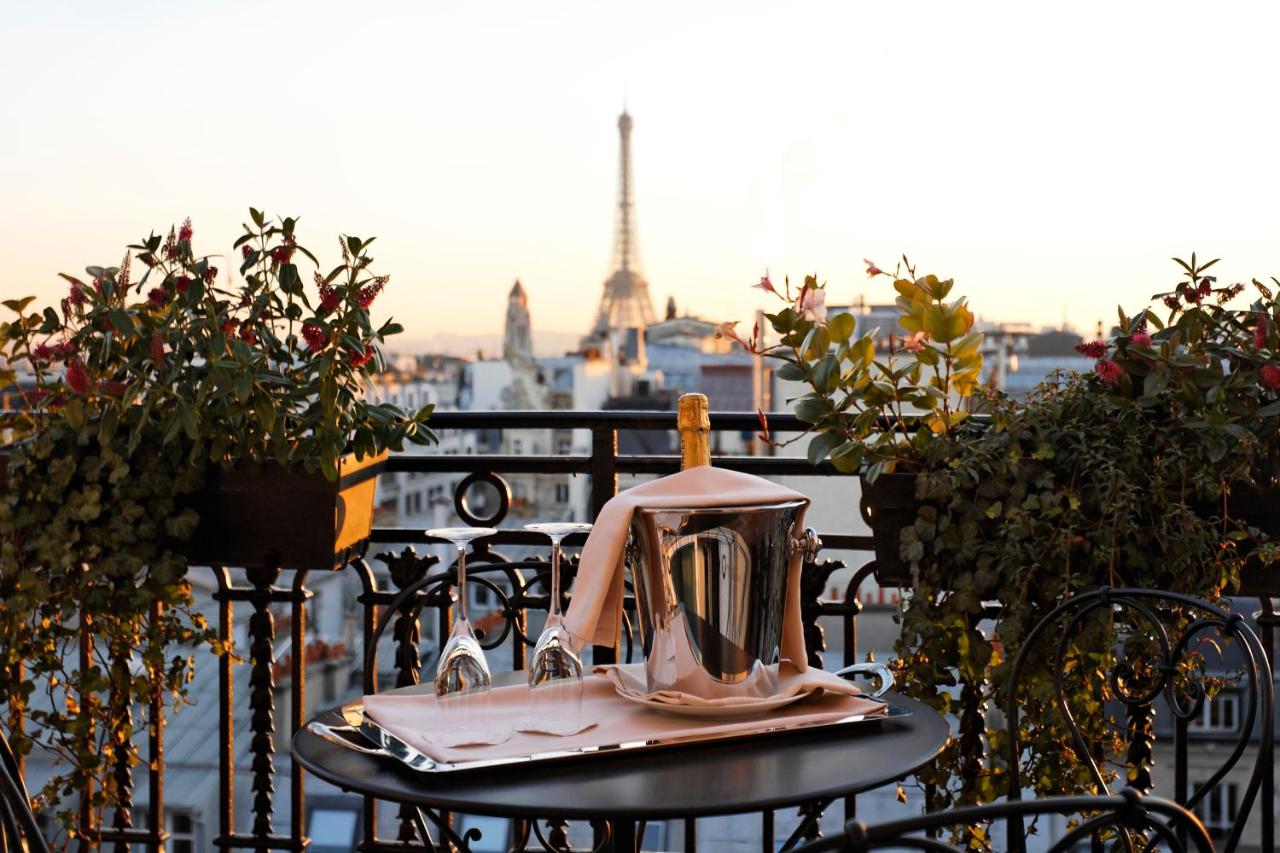


Hey,
Thanks for sharing this informative post. I really appreciate the insights you have shared here. To make your trips more comforting i would like to introduce you to Holiday eSIM Europe, so that you or your readers can travel without any hassle and stay connected to your dear ones. For more information feel free to visit our website to avail great deals and offers.
Keep up the good work!